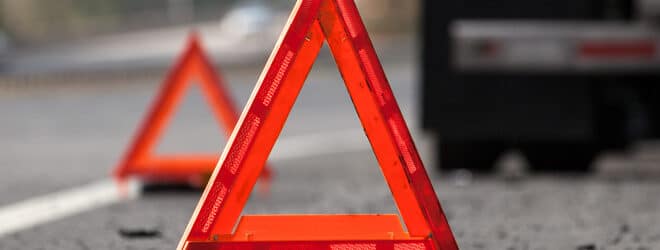Over the past few years, the most common trucking-related claims that we’ve received at Northbridge Insurance have remained pretty consistent. To give you a better idea of what they are, we’ve put together our top 5 list of claims submitted by transportation customers for 2013, along with some tips on how they could have been prevented.
- Sideswipes
For four years running, sideswipes have been the most common transportation-related claim at Northbridge Insurance. Typically, these events happen as a result of changing lanes, passing or vehicles going in opposite directions and colliding close to the centre line.In many cases, prevention is as simple as properly adjusted mirrors that give the driver a clearer view of surrounding traffic. A number of companies have implemented mirror adjustment stations in their fleet yards to help address the issue. There are also courses available for drivers that specifically provide training on mirror adjustment. Another prevention strategy is to implement equipment upgrades. Side-mounted flat mirrors can be limiting and still leave the driver with a blind spot. Adding fender-mounted mirrors, on the other hand, allows for a wider lane view. And heated mirrors allow for a clearer mirror surface in cold or rainy weather improving visibility. Collision avoidance systems can also be installed. The system will set off an alarm if an obstacle or hazard enters a turning truck’s blind spot. Finally, proper seating position can also improve vehicle control while driving. - Rear-end collisions
With trucks being 40 or more times heavier than the average car, it’s not surprising that they’re going to have a longer stopping distance that the average car and have certain limitations when it comes to braking, visibility and controlling acceleration.While anti-lock brake systems and optional disc brakes are definitely helpful, proper defensive driving techniques will go far in ensuring drivers are constantly aware of what’s going on around them. Things like maintaining proper stopping distance from the vehicle ahead and leaving extra space to allow for greater stopping distances. Telematics or ECM can also help identify drivers who are speeding or heavy braking, opening the door to training opportunities. - Vehicle rollovers
Rollovers are probably one of the biggest risks to truck drivers. Driver fatigue, a high rate of speed around a curve and unsecured cargo shifting en route have all been contributing factors to a rollover situation.Reducing speed on curves and ramps is a first step to preventing rollovers. Drivers should also know their cargo and make sure it’s properly secured. A number of fleet operators have introduced comprehensive fatigue management systems to help address the issue of driver fatigue. These programs aren’t simply about ensuring compliance with hours-of-service regulations… they’re about finding solutions that will help drivers stay awake and alert when they’re at the wheel. Electronic stability control systems can also be installed to monitor motion – they can even apply the engine’s power and specific brakes to help prevent a rollover. - Rear-ended by other vehicles
You might think that other motorists would be highly aware of a big truck that’s on the road ahead of them. In some cases, a truck getting rear-ended is due to the other vehicle following too closely or approaching too quickly. In other instances, the event took place at night or during inclement weather where visibility was limited.To help prevent this type of collision from occurring, it’s critical to stay as visible as possible. If the driver is moving slowly, they should apply their hazard lights to signal that they’re not travelling at the same speed as the rest of the traffic. And for trailers that may not be as well lit as the cab of a truck, extra conspicuity tape, lights and other reflective material will help ensure they’re easily spotted. - Striking objects
The fifth most common transportation claim of 2013 involved trucks striking objects. Most commonly, these objects included animals on the road, low hanging wires, poles, bridges and overpasses, buildings and loading docks, and parked vehicles.Operating a large vehicle can be a challenge as there are more blind spots for drivers than there are with the typical family car. A seemingly simple task like backing up requires a considerable amount of time and skill – and if it happens that the driver is in an unfamiliar location, it becomes even more of a challenge. This is where having properly adjusted mirrors and seat is key to ensuring maximum visibility. Drivers should also take the time to familiarize themselves with a new location or fleet yard so they can be fully aware of any potential hazards.On the road, drivers can’t predict when a deer or other animal might run in front of their vehicle. They can, however, install reinforced bumpers (often referred to as a moose bumper) to help lessen the damage. It’s an addition that could make the difference between cosmetic repairs and the total loss of a vehicle.
Aside from the obvious impacts of the physical damage to a vehicle, its equipment and its freight, there are other effects that these accidents can have on a trucking company. For one thing, there’s the reputational damage due to additional costs and delays from the loss or government safety ratings. There’s also the financial impact of any lawsuits resulting from injuries. And then there are the hidden costs that come with time delays, lost revenue due to downtime and customers who may decide to take their business elsewhere.
While not all of the top five claims were 100% preventable, many of them could have been avoided or have had a lesser impact if preventative measures had been taken. Knowing what the risks are in advance can go a long way in helping to prevent these types of losses.



